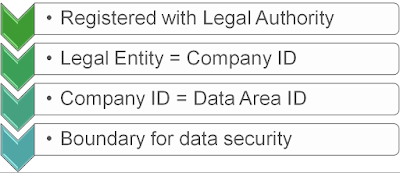8 Ways to Save Time and Money - Part 6: Cloud Services
I apologize in advance for an entire article about one of those fancy buzz
words. Just be glad I didn’t make an article for IoT (but maybe I will one day - since Dynamics 365 has done some cool stuff with this technology in the latest release). For now, we will leave that for another day. One day I may even combine all the buzz
words (IoT, Cloud, Cortana Intelligence, Machine Learning, and however many more I can think of) into a single meaningful sentence.
So the root of this item on my list of ways to save time and money is the research that shows you really can save time and money with a variety of "As a Service" offereings available out in the market place.
So with this article I am hopefully going to help you differentiate the various “As A Service” offerings. Each “As A Service” offering constitutes
the management of different aspects of your technology stack. Depending on the skills and staff that you employ, you may want to consider one or more of the core services to outsource to a cloud or managed services provider. When looking for a cloud or managed service provide, make sure you look at the overall service portfolio, get references, and be sure to read contracts very carefully.
The diagram has a column for each of the "As a Service" offerings available in the market place. Some companies may have different names or slightly different variations to the services. But I think this diagram gives a good picture of typical cloud services. The green boxes represent components that you manage internally, while the blue boxes represent cloud or managed services that you outsource to a solution provider. You may notice that some of the boxes are half blue and half green and those are services that have some amount of cross over or lots of variations out in the market.
In the following section, I will describe each of the services and benefits of outsourcing these services.
On-Premise
•For
on premises technology implementations, everything from the facilities to the
data itself is owned and managed by the organization
•One
of the greatest drivers of cloud adoption today is that as each of these parts
of the overall stack becomes more complicated and expensive, it makes less
sense to own and manage
•This column is a scenario where you will manage everything internally on your own hardware.
Co-Location
•Co-location
services includes ownership and management of:
•Facilities
•Power
•Cooling
•Connectivity
•Physical
security / access control
•In
co-located scenarios, customers still own and manage the server and storage
equipment
•This scenario allows you to save money on the the facility, and heating and cooling requirements of your physically equipment. You are able to save on this because you are sharing the cost with all people who place their equipment in the same facility.
IaaS (Infrastructure as a Service)
•IaaS
expands upon co-location as the provider assumes responsibility for the compute
and storage aspects
•Customers
are still responsible for managing everything that is running within the
managed environment from the operating system up
•With these services you can save money on the compute and storage aspects as well. Again you may be sharing a physical SAN for example with other clients in the facility, but your service provider is responsible for the up-time of those devices/services.
PaaS (Platform as a Service)
•PaaS
goes beyond IaaS in that the provider manages the operating system, middle-ware and run-time aspects of the environment
•PaaS
solutions are often utilized when compliant environments are required as
administrative rights to the environment are removed from the customer
•The
customer is still responsible for managing aspects of applications as well as
its own data.
•Dynamics AX 2012 when hosted on Azure and deployed through LCS falls into this category.
SaaS (Software as a Service)
•SaaS
places management of the entire stack in the hands of the service provider
•In a
SaaS scenario, the customer is typically using a web browser to utilize an
application
•Think
NetSuite, Salesforce.com, Office 365, Dynamics 365
•Dynamics 365 for Operations when falls into this category with a few variations currently and coming in the future depending on on premise components that you choose. This will primarily apply to scenarios like retail stores (which is currently available on premise) and warehouse management as a few examples.



Comments
Post a Comment